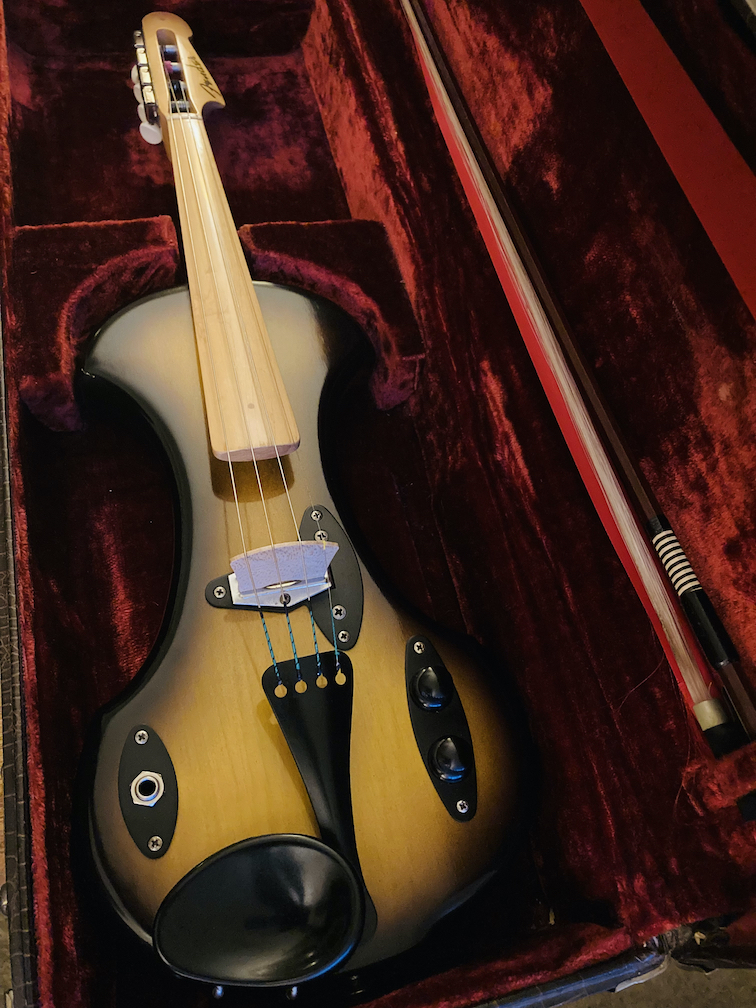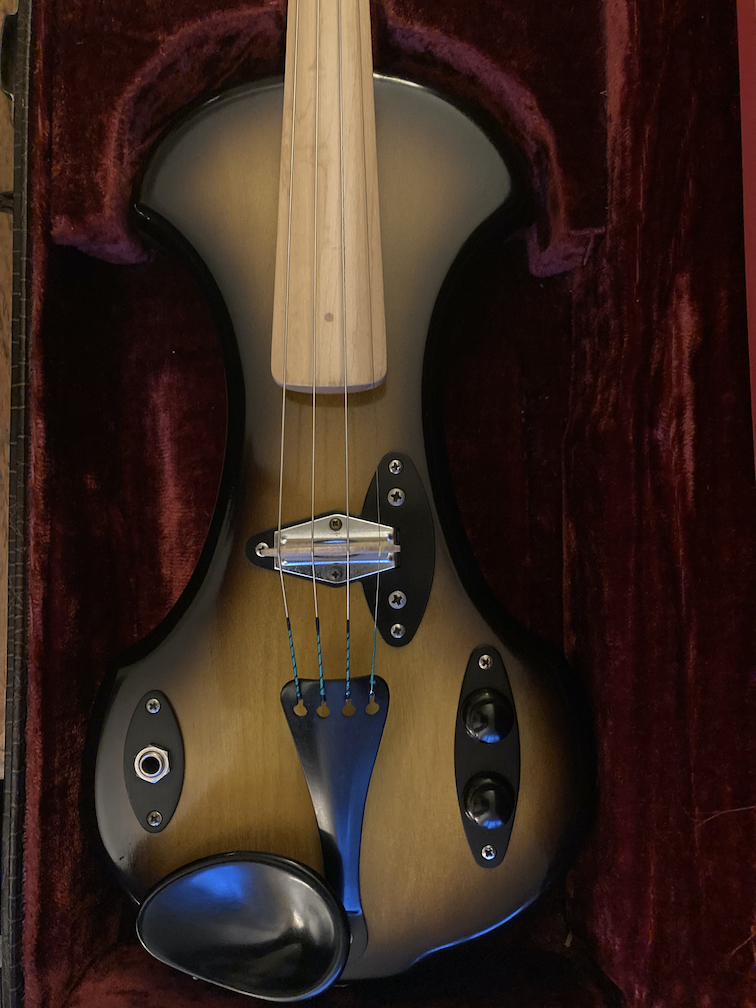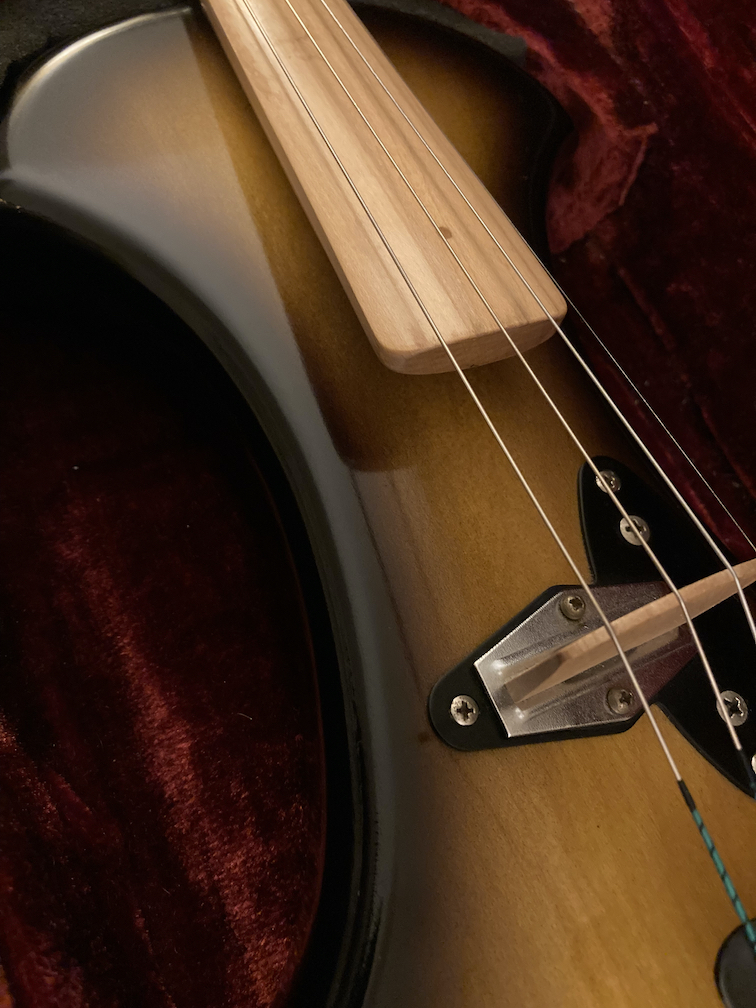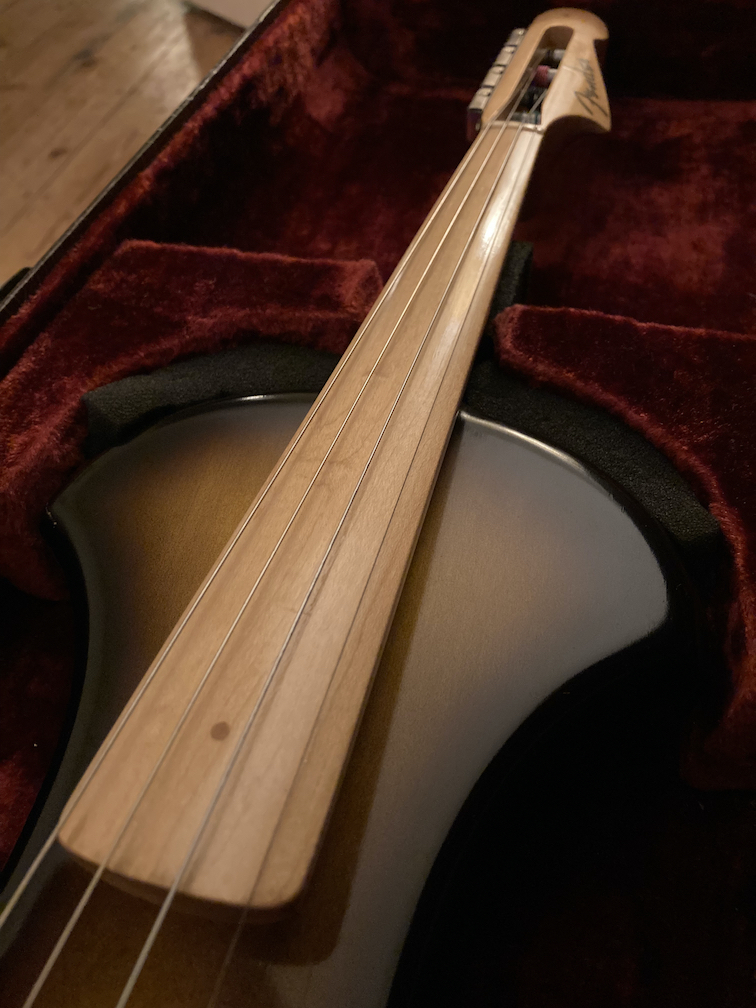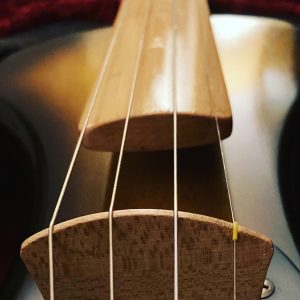
a personal study
©2022, Benedict Heaney, Deltaviolin
Any real, lasting future of bowed strings will include exploration and development of Leo Fender’s Electric Violin. I am convinced.
When first presented in the late 1950s, the Violin profession didn’t take to it. Quite effectively it was written off completely and that seemed fine. Now however, considering the immense stature Fender has gained and maintains, as attention and interest in this maker’s Violin grows; those associating themselves with such a mindset may continue to ignore it, only increasingly to their loss. Times have changed and as ever Violin moves on.
Leading bowed electric string practitioners today know from direct experience, attitude towards bowed electric strings in the 1970s profession was not favourable. We can only imagine what it was like two decades earlier. From total stonewalling, through abject ridicule over more than six decades, those dead-end attitudes have thankfully relaxed.
At risk of shameless misguided self-promotion, who else can or has ever bothered to publicly comment on Leo Fender’s first production model Electric Violin Design & Violin Pick-Up? Considering Leo Fender’s Violin has never been manufactured as he originally created it and in terms of players who have been able to study this instrument first hand, it appears no-one else but me!
Playing the unadulterated instrument is an experience really second to none. There isn’t another example as such known to compare.
We are considering Clarence ‘Leo’ Fender and asking could he possibly do for the violin what he does for the guitar? As the best known names in Violin reverberate on, infused in our musical history and music making, Fender is so featured too, across the globe. If the total massive impact of iconic Fender brands teaches us one thing, it’s proof of the adage if it ain’t broke don’t fix it.
I believe Violinists and business aspirations got in the way of the original Fender Violin, and future incarnations, almost destroying the original idea they thought to improve!
It might well be assumed that such an instrument and record of its history is of common knowledge to those at the top of the Fender company, but it is not. As I found out writing to the current CEO who recalled my contact recently in an interview:
“It’s funny, I got a letter from an old school pal, who sent me a photograph of a Fender electric violin. And I’m going, ‘This is BS. Fender never made electric violins’. Well, yes, they did. And he said, ‘I want to write a book on this. Can you send me all the old documentation that you have, you know, the spec sheets and stuff?’ So I inquire and we’ve got nothing. Absolutely nothing. We were not very good at maintaining a history of our own culture” – Andy Mooney, November 2019 – Interview: by Craig Campbell
The most recent biography published in 2017, written by Leo Fender’s wife Phyllis, makes no mention of the Violin. Not because it was considered a failure or of no interest, simply that he had never once spoken about it during their time living and working together.
“Leo was so quiet about his accomplishments. Of course, we all know about the Telecaster and Stratocaster, but I had no idea that Leo had invented an electronic violin until Mr. Benedict Heaney shared his wonderful research. Leo loved musicians and thought of them as angels sent by God to make the world a better place, and now we know that this included violin players. This is an important contribution to understanding the life and legacy of Leo Fender. I am so grateful!” – Phyllis Fender, July 2020 – testimony via Randy Bell

The design & finish of this Fender Electric Violin is exquisite and rightly heralded as Another Fender First. Not the first electric violin of course, but the idea defined.
Leo Fender’s Electric Violin was built for the needs of current Violinists and sets out the Violin perfectly evolved to best meet the standards of the profession. As a player that is what I think and find to be true.
The body & neck templates were developed at the latest in 1952, when Leo Fender received the saw templates. There are no other versions expected to exist, only one design went to build. The finished instrument, dating no later than 1957, handed to then General Manager Forrest White for trials, as supported in signed off paper-work. In the following year Leo Fender make patent applications for an Electric Violin Body Design and Electric Violin with electromagnetic pickup therefor. These were awarded in 1960 and 1961 respectively.
Exceptional in every way, this instrument marks a significant moment in Violin history. After this, the profession of Electric Violinist is well recorded.
The first video footage of Leo Fender’s 1957 Electric Violin in concert? Seemingly also one of the earliest recorded public performances featuring this instrument.
At the time of writing in 2022, there are no certified recordings featuring Leo Fender’s 1957 Electric Violin dated before 2016,
In 2017-18 the instrument was used to create a series of recordings self-released by the author and received to critical acclaim. As no other instrument was used in making recordings, the listener is given the first opportunity to hear something of the broad scope that this particular electric violin offers the violinist. EP-∆V and the full-length album Dark Descended are available to download here. Alternatively the recordings can be streamed and downloaded via Spotify and other major digital platforms here or using the links below.
https://ditto.fm/v-ep-benedict-heaney
https://ditto.fm/dark-descended
As well as recordings and broadcasts of the instrument played solo, it has been used in ensembles to great effect, both on stage and in the studio.
The results of some of the professional studio work can be heard on commercial releases by following these links:
- Found scattered throughout the two most recent albums “Wax Cat” (2021) and “Ramshackle Tabernacle” (2017) by The August List
- Featured in “The Danger Tree” (2018) by Marc Canham
- Integral to much of the album The Girl With The Secret Fire, in particular featured prominently in the song “Pair Of Blue Eyes” (2019) by Death of the Maiden
